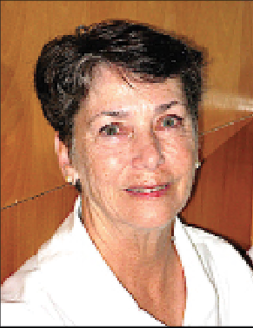ESJ students tell Black History stories through art
Published 12:04 am Wednesday, February 23, 2022





|
Getting your Trinity Audio player ready...
|
RESERVE — The door to Stephanie Maney’s classroom captivates East St. John students and teachers who walk through the halls during Black History Month.
A quilt hangs on the wall beside the door, each patch of fabric conveying a history that spans from past to present. Below it, a table of braided hairstyles map out routes the enslaved followed to escape to freedom. Drawings, poetry and posters surrounding the door illustrate family, knowledge and culture. Created separately, the pieces come together seamlessly to paint a story of heartache and hope.
“I try to make sure my students represent culture across the board every Spring. As you can see, they worked really hard. It reflects them,” Maney said. “They get a chance to tell their story, even if it’s painful. They get a chance to express their pain, their hurt, their fears and their hopes.”
Teacher Stephanie Smith assisted with the Black History Month display. As a seamstress, she was happy to share her materials for a project that helps students express themselves.
“We look at it, and we get sentimental because we know the story the students are telling,” Smith said. “They use their imagination, their knowledge, their creativity to put this together, and I think they are very proud of themselves. From the hair to the artwork to the poetry, they see themselves reflected in this work.”
East St. John student Cayah Gordon assisted with illustrations on the classroom door. Lines of unity connect drawings of a black woman and a white woman, reminding Gordon of the colors that make up her own family. Pictures of flowers and roots run the length of the door, paired with the quote, “People without the knowledge of their past history is like a tree without its roots.”
“Our culture is homemade. It makes you feel good inside,” Gordon said. “I feel connected to the food and the music. Soul, jazz – we did that. We had the instruments and the soul for it.”
Gordon believes art can be a vessel to express what it’s like to be black in America.
“You can show your stories through music or dance. Some people do that, but they don’t do it enough. I think people should really use music, dance, poetry, art to show how racism affects us and other people,” Gordon said.
Hair is one way black communities have historically told stories about their experiences, according to East St. John student Daejahnae Weston. Through her research, Weston learned the history of braided hairstyles dates back to 3500 BCE as a visual indication of community, marital status and social success within a tribe. Later on, braided hairstyles would be used in the Underground Railroad to illustrate maps to freedom. For her part in the class project, Weston used hair beads and braids to symbolize an escape route from Texas to Mexico.
The connection between past and present was seen in students’ contributions to the class art piece.
Student Cairon Campbell pointed to a collection of poems on paper that was crumbled and stained with dirt to symbolize the conditions black people endured. Imagining the plight a slave would have faced on a plantation, Campbell wrote, “Owned by another person because his skin is lighter…Living in a place where they’ll hang you for wanting to be brighter.”
The poems transition to race-related issues in modern times, trading the symbol of a noose for a pair of handcuffs.
“We still go through this to this day. It’s not as bad as it was before, but it’s still there,” Campbell said. “I’m a black man who has dreads and tattoos, so I can’t really go out at night. I’ve been profiled before. I wasn’t doing anything, just walking to my house, but they had a suspicion about me. It’s something that people don’t really understand, and they have to try to put themselves in my shoes.”
Gordon said problems still exist, especially in the judicial system.
“A lot of what was happening back then is still happening. It’s been going on for so long. There’s so much negative energy put into it, and we feel it every time,” Gordon said.
She believes a focus on family is the key to a brighter future.
“Family matters. I think people lose sight of that. I think families should teach their kids, this generation starting now, not to be racist. I’m talking about every color,” Gordon said. “You need to sit down and talk to somehow who deals with it to reflect on how they experience it and how to prevent it. The world could be a better place and be real safe if people didn’t have that negative mindset that gets passed on.”
East St. John Principal David Lewis is proud of the introspection that went into the Black History Month piece and the conversations that can start from it.
“I’m very proud of these teachers as well as the scholars. One thing that we have to do for our youth is to give them the history,” Lewis said. “We want them to be proud of their heritage – not just African American heritage but all heritage.”










